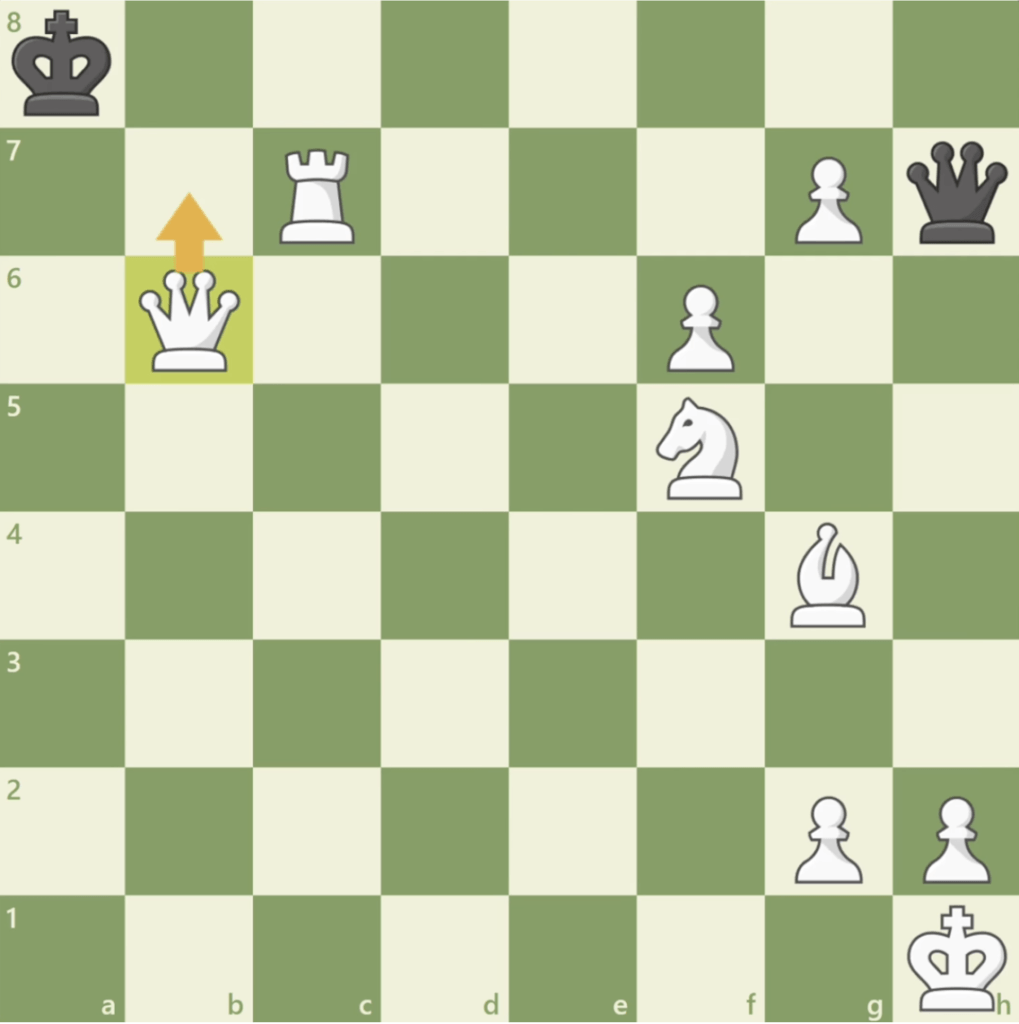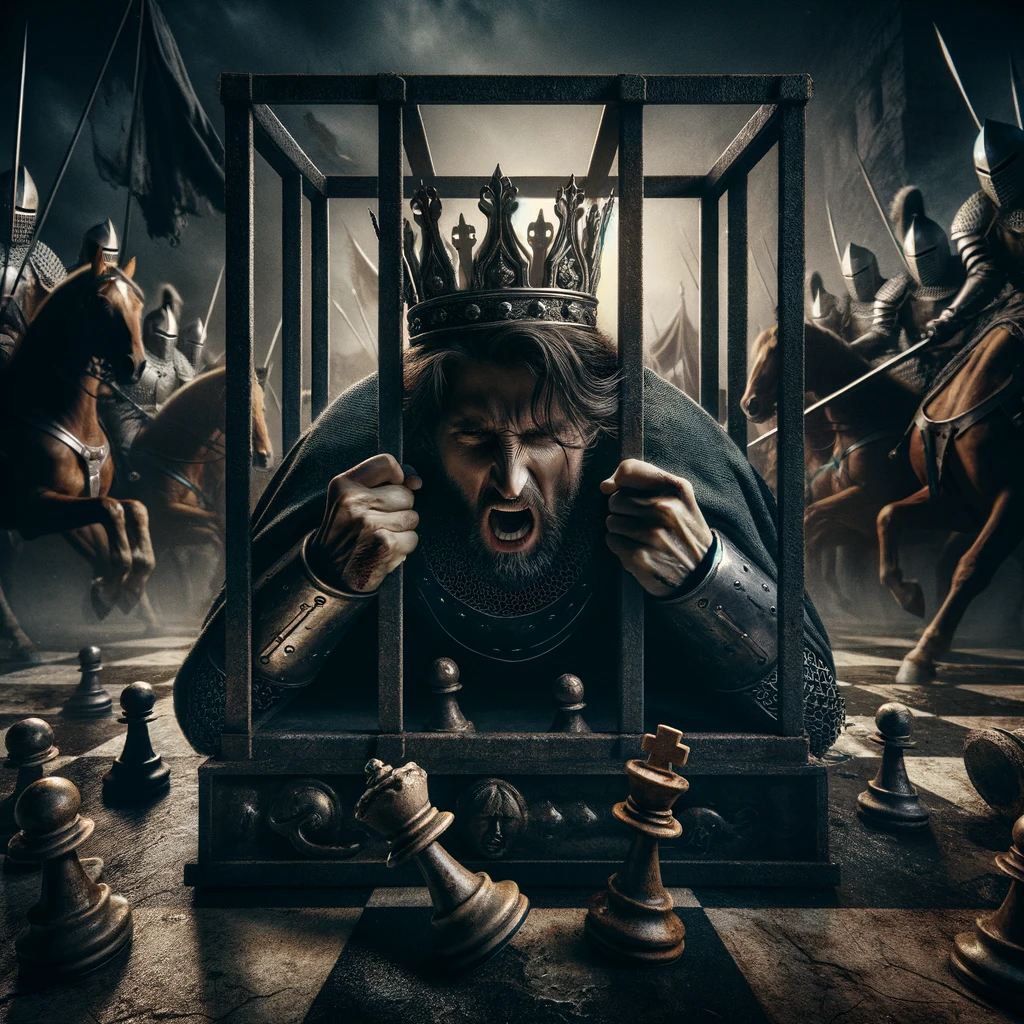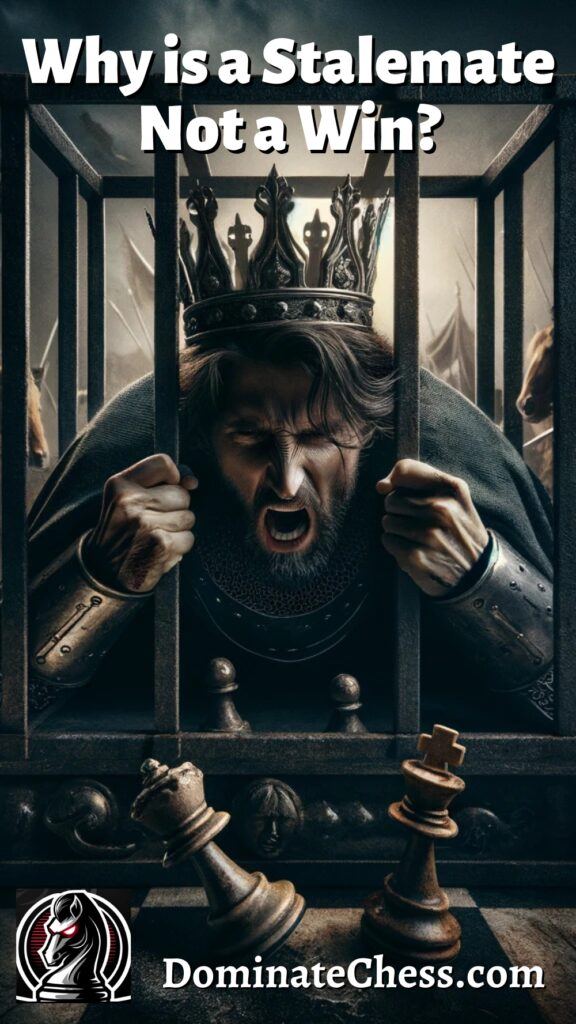You’re playing chess online. You’ve trapped the opponent’s king! But then, draw? Why is a stalemate not a win?
I feel like this has happened to everyone at least once.
Why is a Stalemate Not a Win?
A stalemate is a draw and not a win because the king is not in check. For checkmate to happen, your opponent’s king must be in check with no legal moves available.
The video below details how stalemates happen very, very well.
Even if you have a clear material advantage with many more pieces than your opponent, if your opponent has no legal moves to make, the game ends in a draw!
How Stalemates Can Happen
While a checkmate can happen very early in a game, stalemates can only occur deep into a game.
You don’t have to be down to just your king for a stalemate to happen. In fact, each side could have a handful of pieces left.
The video above shows several examples of this.
The most common occurrence of stalemate, though, happens when one side is down to either just their king, or maybe a king and one or two other pieces, and the opponent still has several pieces left.
How to Avoid Stalemate If You’re Dominating
The worst feeling in the world is ending the game in a draw when you CLEARLY dominated your opponent and were a move or two away from checkmate.
To avoid a stalemate, either find a move that immediately places your opponent in check (or even better, checkmate), or if that’s not possible, backtrack a bit and allow your opponent to have at least 1 legal move to make.
This at the very least allows the game to continue so you can hopefully find a way to place them in checkmate in the next few moves.
Many times when you’re racing against the clock (maybe while playing bullet chess or blitz) and clearly dominating you can rush your way into a stalemate. (Speaking of a race against time, have you ever played Sudden Death chess, aka Armageddon chess?)
When your opponent is being absolutely dominated, they very well may try to create a stalemate! A draw is better than a loss from their perspective, so be aware of this!
Using Stalemate to Your Advantage If You’re Losing
If you are the one being dominated in a game, a stalemate could very well be your only course of action.
Even though your opponent may “feel” like they won, a draw is not a win.
If you’re down to just your king, do your best to trap yourself into a corner. Or if you still have pawns left, move them so they can’t move forward anymore.
If you’re about to put in checkmate, and you can’t see any way out of it, consider if there is any possible way to create a stalemate. This can happen even if you still have a major piece left like a queen or rook.
The video above shows a great example of this at the 1:11 mark. Let’s take a look at a position where white is absolutely dominating.

In this position, black appears to be DOOMED!
Down to just a king and a queen, black is one move away from being put in checkmate by white’s queen.
White has so many pieces left, is there any way out of this mess?
There is! And the way out is for black to FORCE a stalemate.
Notice that black’s king has no legal moves. It can’t move to any other square without putting itself in check.
So, if black’s queen disappeared from the board, the game would end in a stalemate.
With black to move, can you see the one move that can be made which will ultimately force a stalemate?
Here it is: moving black’s queen from h7 to h2.

Moving black’s queen from h7 to h2 places white in check. The only move available to white to get out of check is to take black’s queen.
This IMMEDIATELY leaves black with only their king and no legal moves. White has lost its MASSIVE positional advantage and the game ends in a stalemate with no winner!
Just as disappointing as it is to stalemate with an opponent you’re dominating, it is equally satisfying to stalemate with an opponent who easily should have beaten you!
Should a Stalemate Be a Win for the Player With Material Advantage?
In my opinion, stalemates should never be considered a win for the player with material advantage. It is a MASSIVE BLUNDER to allow a stalemate to happen when you’re dominating. You cannot reward a player for making a blunder.
The definition of material advantage in chess is having a greater value of pieces left on the board.
You can see a chart with the value of chess pieces here.
So in the example above, where white clearly had material advantage over black, it was a clear blunder by white to not end the game earlier.
Also, by the rules of chess, you cannot force your opponent to make an illegal move. So with no moves to make, a stalemate happens and the game ends instantly in a draw.
Are All Draws Stalemates and Vice Versa?
While every stalemate is a draw, not every draw is a stalemate. A draw can occur when there is no possible way for either side to put the other in checkmate.
The most common occurrence of this happening is when both sides are down to just their kings. Neither king would be able to put the other king in check without putting itself in check.
This moment both sides are left with just their kings, the game ends immediately in a draw.
Final Thoughts
When a stalemate happens, no matter if one side has a clear material advantage over the other, NOBODY WINS. It is a major blunder for the dominating side.
What do you think? How do you feel about a stalemate ending in a draw? Has this ever happened to you? Have you been playing with someone live and thought when a stalemate happened that the player with the material advantage won? Let me know how you feel in the comments section below. I always reply and I look forward to hearing from you!



I haven’t played chess in awhile, but I never really thought about how a stalemate can be a draw. I would have to agree with the author after reading the article. Having no moves left on the board is different from the king being in checkmate, and checkmate is what allows a win! Thanks for this article, it was interesting and makes me want to dust off my chess board.
Thanks for the comment!
Wow I used to play a fair amount of chess on my computer and don’t think I’ve ever seen a draw or stalemate. That’s very interesting to see ways this can happen in chess and reasons why someone might want to create this situation. I liked the visuals showing the layout of the pieces and the video was helpful as well.
You’ve never had a draw??? Believe me it happens a lot. Thanks for the comment!
wow plain simple language to learn something like chess, probably the most to learn a short info. time maybe to look at making a book on the subject
I appreciate it! Thanks for the comment!
The best game I ever played ended in a stalemate. I can say I am supprised that this is actually a stategy. I know being beaten 3 times in a row I was thrilled that I ended the night with a stalemate, Hey I didn’t get beat. It’s informative to know how to not cause it, learning from our mistakes so we can go in for the kill.
Glad you enjoyed this!
I used to play chess a lot when I was younger and I admit I used to hate when I would get in a stalemate with an opponent because I knew somewhere along the game I could have made a better move.
I game like chess that is all about strategy a stalemate to me is definitely not a win but a loss though not according to the rules of the game.
Stalemate’s are tough when you should have won. I agree. Thanks for the comment!
Oh wow, I had never really thought of it like that, i think the advice about bactracking to eave your opponent some room to move is really clever, I think I get too much into the mind set of going in for the kill that a draw can occur when it could have been avoided. Thanks for this.
Exactly right. It happens a ton to me and I’m like “why did I rush into that??? I had him!” Thanks for the comment!
The first time a stalemate happens to a novice player, it’s an unpleasant surprise, Other times, it’s the best-case scenario after getting dominated in a game. Thanks for sharing the reminder for chess players to consider their final moves before an otherwise strong game turns into a stalemate. I like the advice to back off a bit when your opponent only has one or two pieces left!
Glad you enjoyed this! Thanks for the comment!
I loved the visuals on this article. I used to play a bit of chess and never even considered stalemate I always tried to win but this has given me a lot of food for thought and look for a draw if I’m not doing so well. A really informative and inspiring piece
Thanks for the comment!